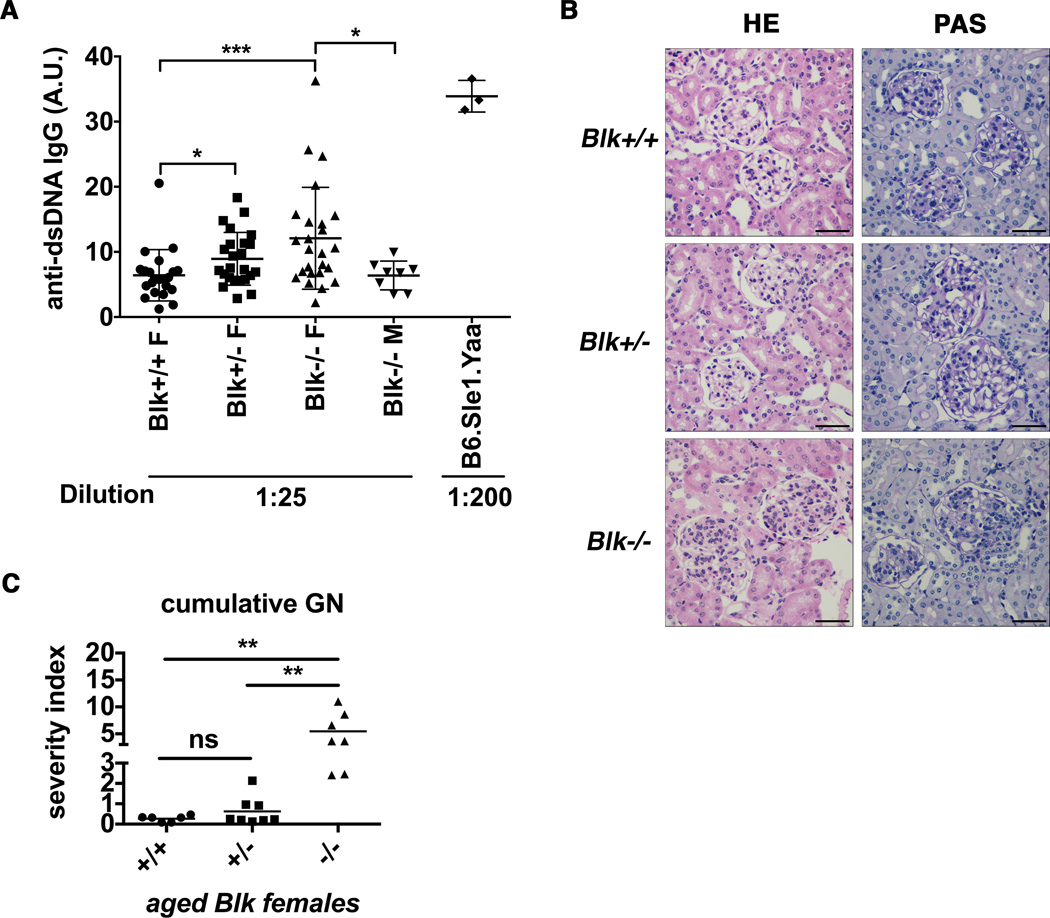Figure 1. Aged female Blk deficient and -haploinsufficient mice show increased IgG anti-dsDNA and proliferative and chronic glomerulonephritis (GN).
(A) Sera from female and male mice with indicated Blk genotypes at 48-week of age were diluted 25 fold for ELISA measurement showing significantly increased anti-dsDNA IgG in Blk+/− and Blk−/− female mice (mean± SEM; ***p≤0.001, *p≤0.05, nonparametric t test). Serum from lupus-prone B6.Sle1.yaa males used as the positive controls was diluted 200 fold. Levels were expressed as arbitrary units (A.U.). Total aged mice analyzed: Blk+/+ F (n= 22), Blk+/− F (n= 24), Blk−/− F (n= 25), Blk−/− M (n= 8), B6.Sle1.yaa (n= 3). (B) Representative examples of glomeruli from Blk+/+, Blk+/−, and Blk−/− females at 55-wk stained with HE and periodic acid-Schiff stain (PAS). Blk−/− mice showed enlarged hypercellular glomeruli with inflammatory cell infiltrates. Black scale bars represented 100 µm. (C) The severity index of cumulative GN in female Blk mice at 48∼60-wk of age was determined through PAS-stained slides. Pathological changes were scored by two observers blinded to the genotypes. Cumulative GN score is the summary of acute and chronic GN severity (mean; **p≤ 0.01, Kruskal-Wallis nonparametric test). Total aged mice analyzed: Blk+/+ (n= 6), Blk+/− (n= 8), Blk−/− (n= 7).

